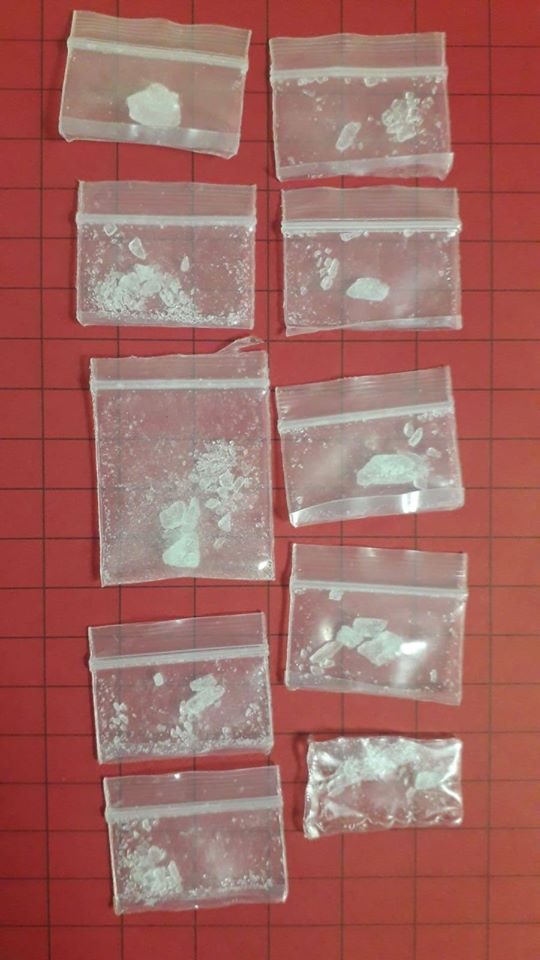Ensuring that the rapidly fading tradition of bure construction does not completely die out and establishing that its knowledge and skills are passed down to the younger generation of today, is somehow peculiarly hinged on environmental conservation.
Over the past few weeks, this paper has been reflecting over a July 11-12 weekend at the Namosi Eco Lodge, near Navunikabi Village, along the Wainikoroiluva River.
Here, unlike the case some decades ago, spotting a bure or a building with at least traditional thatching (non bure walls) has become a rarity.
Some Namosi elders still possess the ancient knowledge and skills of bure building and thatching but the fear is that, with the current choice of homes being largely wood, cement and corrugated iron, the need for having bure homes would soon cease.
When this happens, the traditional know-how and practical skills of erecting the once-amazing bure that ruled the village skyline, would inevitably disappear.
Danny Jason, the owner of Namosi Eco Retreat and a son of Navunikabi, are amongst those worried about this fast dying traditional artefact and the natural resources needed to build them.
After working in a few tourism-related jobs in Nadi and the Coral Coast, he decided to offer day trips and homestay at his village, in the highland of Namosi.
Two to three months down the line, after sensing the need to offer tourists more privacy and security, he knew it was time to set up a little eco-tourism attraction along the fabled river that ran beside his village.
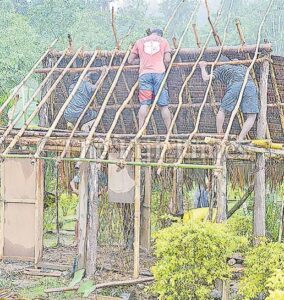
touches.Picture: JOHN KAMEA
“I wanted my guests to experience something authentically i-Taukei so I built bure along the river,” Danny says.
But maintaining the bure became a problem after many years of wear and tear.
Luckily, to the rescue came local Non-Government Organisation, Nature Fiji Mareqeti Viti, who had been involved for some time with a project on the conservation of soga or sago palm, which is endemic to Fiji.
Danny wanted to re-thatch his bure using sustainable methods and Nature Fiji provided the technical expertise, backed by many years of research.
“Getting help from Nature Fiji was a blessing,” Danny says,
“The result was re-thatching my bure using soga which is harvested sustainably”.
“I hope we can continue this relationship in the future when we re-thatch more bure.”
Since 2012, Vitale Livaliva, from Masi, Nuku in Serua has been a popular figure in Nature Fiji’s soga conservation project.
He is a highly regarded bure master builder, having vast knowledge and skills in the use of Fiji’s precious soga for thatching purposes.
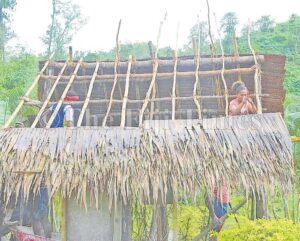
Livaliva is married with a son who is quickly following his father’s footsteps.
He is passionate about the conservation of soga and having Culanuku Village, where he resides, as one of the last soga frontiers in the wild.
“The conservation of soga in Serua has not only revived the population of palms in the wild, it has also revived the tradition of bure construction,” Livaliva says, with tears in his eyes.
Many years ago, the number of soga plants in Serua had dwindled to the point of near-extinction.
Vast areas of land where the native palm once grew abundantly were logged expansively using unsustainable harvest methods.
Intervention through a number of collaborative efforts was the only way to revive the degraded soga landscape.
Nature Fiji worked closely with resource owners in Culanuku, Serua to rehabilitate the soga forest through a replanting programme.
Today, that has extended to support family livelihoods, a vital component of the palm’s conservation.
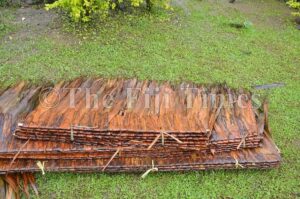
“The truth is, if resource owners do not see any value of the soga in their daily lives, they may not see any logic for conserving it,” explains Jake Taoi, Nature Fiji’s conservation officer.
Today, after many years since of research and advocacy, the soga leaves are harvested sustainably and women are engaged to sew soga shingles used in thatching bure.
By creating livelihoods through the processes of soga planting, harvesting and shingle sewing, resource owners are given the impetus to protect and conserve the sago palms for their own livelihood and for the benefit of future generations.
“A bure takes us on a journey to the olden days. Living in it promotes peaceful and healthful living,” says Livaliva.
“As a master builder I am proud to be involved with soga conservation and the revival of bure thatching.
It benefits my six-year-old son whom I hope will follow my footsteps and it will benefit Fiji in the future.”
Marita Manley, of Talanoa Treks, Fiji’s only dedicated hiking company, believes bure thatching using sustainable means can provide a market for tourism properties.
A member of Nature Fiji’s management council, Manley says the whole thatching exercise at the Namosi Eco Retreat had a number of objectives one of which was “trying to create value chains”.
As the COVID-19 pandemic continues to heap havoc in Fiji, Manley adds “it is good to have a fresh conversation around creating eco-tourism ventures that sustain livelihoods and protects nature”.
“The crisis allows us to pause and do a little refl ection on opportunities where we can engage the tourism industry more broadly,” she says, “it is a good time to think about what kind of tourism industry we want in the future and how tourism activities can benefit the community.”
Re-thatching one bure in the Namosi highlands may be a small ripple in the ocean of the 21st-century construction world but it has the power to influence a revival of ancient bure construction and thatching – once the pride of traditional Fijian architecture.
Whenever an opportunity pops up to build a bure for a home, public building or hotel accommodation, it must be regarded as the perfect moment to put Fijian tradition and culture to practice and back on the map.
Building a bure is more than just erecting a physical structure.
It creates an opportunity for village folks to enhance their cooperative efforts and collaborative capacity to work together and assist each other.
There are also rituals and symbols associated with a bure’s many parts.
For example, the yavu or raised platform of stones on which a bure is built, especially the chief’s home or the meeting bure, represents the special and intricate connection between the people and their ancestors.
According to a paper by Sipiriano Nemani titled, “Valenivanua”, the interconnected parts of the bure hold special meanings among the i-Taukei.
The bou, for example, is the chief and the yavu is the vanua.
They are immaculately intertwined.
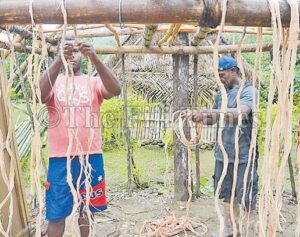
“The kautabua or kaitabu is a special part of the bure that identifies the different ranks and clans in the vanua and their sitting places in the house. The clans provide the necessary support needed to lift and sustain the vanua,” says Nemani.
“The duru refers to the house pillar and is synonymous with “knee.”
It signifies strength, and its huge size implies its dependability.
This is similar to the vanua and the chief; both are symbolic of institutions upon which people depend.”
“The loru are trunks of fern trees decorating both ends of the doka running across the upper part of the bure. The loru, often referred to as the “two faces of the bure,” signifies the presence of the spirit and the ancestors and their protection of the vanua (people).”
There is even a horizontal piece of wood that runs from one of the end posts to another called qasiqasi ni kalavo, which means a rodent’s crawling piece.
Fijian academic, Dr Tarisi Sorovi-Vunidilo, says young Fijian people of today, those in the diaspora and those living in Fiji need to “know and appreciate their rich cultural heritage”.
“They can read and learn their history from books and online research, however, their cultural learning will not surpass the unique experience of practically building a vale vakaviti and living in it too.”
Changing times is inevitable and in the course of modernisation, Fiji’s traditional bure has been making way for western housing since the second half of the 20th century.
This has meant that the men of the village and traditional chief builders have missed golden opportunities to transfer knowledge and skills of indigenous building technology to the young generation.
This, in turn, means that we are at great risk of losing a valuable and important part of Fijian culture and tradition.
In these circumstances, any small initiative, like the July 11 and 12 Namosi Eco Retreat, can go a long way in keeping hopes of preserving the tradition of building bure alive.
Using the bure to market tourism and appeal to people the world over, encourage the protection and sustainable use of the endemic soga, as well as promoting it as a rehabilitative response during a disaster, will increase its value at a time when it seems to be fast fading into oblivion.
As many more cottages get thatched at the nature-rich Namosi Eco Retreat, as more youngsters from Navunikabi Village learn the trade from their elders, as Nature Fiji makes more inroads into soga conservation, as more bure experts share their knowledge with the younger generation and as land and
resource owners in Serua remain true to sustainable soga planting and harvesting – the bure may emerge again in all its beauty, fame and splendour.
Then, the legend of the moli ni veitala ni vanua will be murmured once more amongst the plains that drink from the Wainikoroiluva and the bure, once Fiji’s grand homes of wonder, will be re-discovered in Fiji’s unique village skyline.
- History being the subject it is, a group’s version of events may not be the same as that held by another group. When publishing one account, it is not our intention to cause division or to disrespect other oral traditions. Those with a different version can contact us so we can publish your account of history too — Editor.




